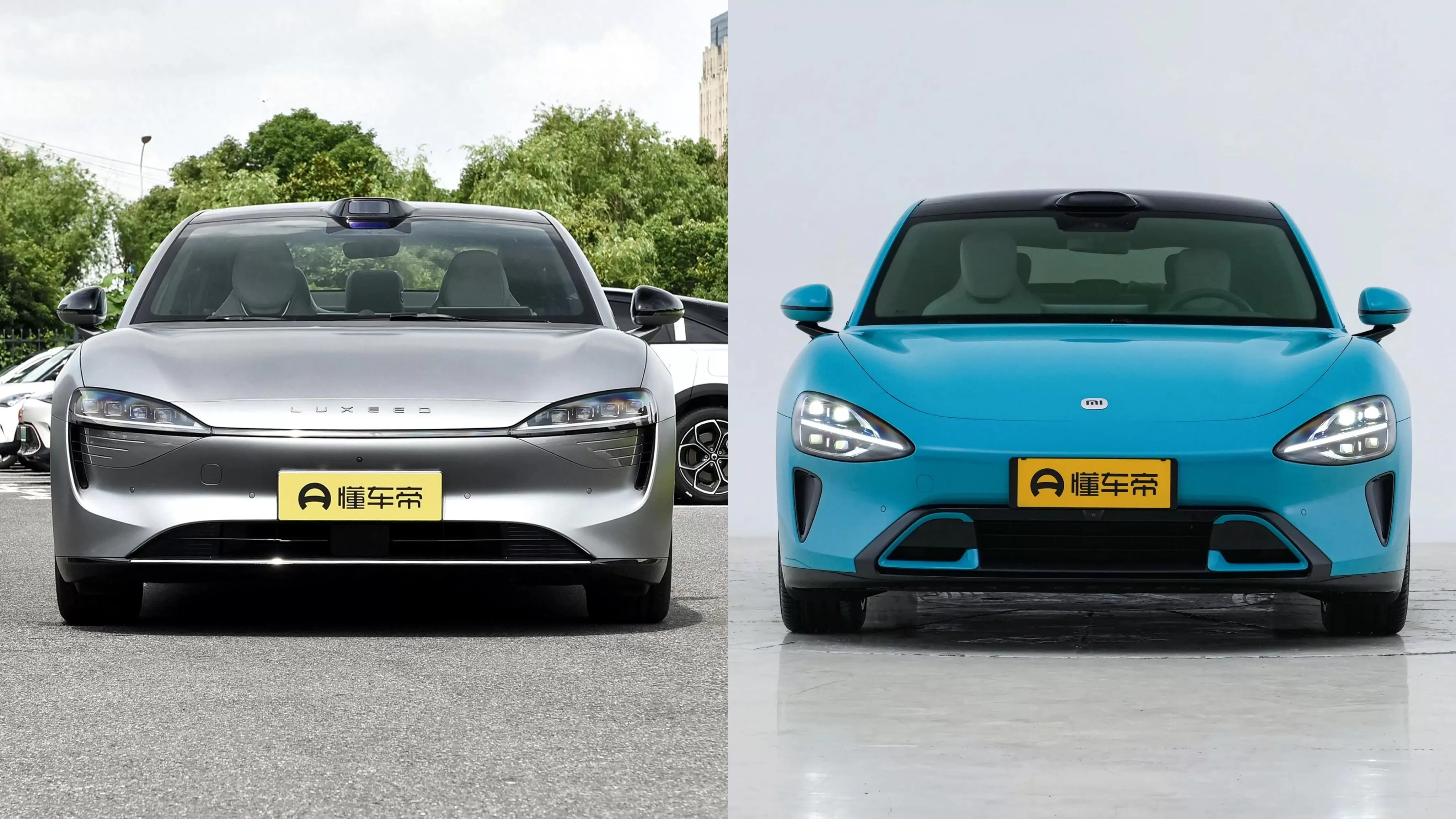Full-size SUVs, with prices often exceeding 400.000 yuan, are achieving astonishing sales figures, reaching several thousand or even more than 10.000 units per month. The market performance of models like Huawei’s Aito M9 and Li Auto's L9 has surprised even luxury brands like Mercedes and BMW. Now, BYD is also targeting the flagship SUV segment. With the official photos of the Denza N9 revealed, this flagship full-size SUV, expected to launch within the year, is getting closer. The Denza N9 features a mainstream boxy design, a massive body length of about 5.3 meters, and offers both pure electric and plug-in hybrid options, with a three-motor all-wheel drive (BYD’s “Yisifang” technology). What kind of product will the Denza N9 turn out to be?
Possibly the Largest in Its Class, Especially in the Third Row
First of all, it’s undeniably big. While it might seem obvious for a “full-size SUV,” the Denza N9 stretches its body length to about 5.3 meters, which is rare. For comparison, both the Aito M9 and Li Auto L9 measure slightly over 5.2 meters, and even luxury giants like the Mercedes GLS and BMW X7 are around 5.2 meters. More importantly, the Denza N9 is highly likely to have a longer wheelbase than its competitors, which could set a new standard for cabin space in full-size SUVs.

The emphasis on a longer wheelbase stems primarily from the rear suspension. Whether it's traditional internal combustion vehicles or new energy vehicles like Denza, Aito, or Li Auto (which still need to accommodate engines), the front axle design can't be as extreme as in pure electric vehicles. Additionally, these full-size SUVs, given their large dimensions and weight, require more space in the front for complex suspension systems.
As for the rear suspension, it's quite evident. A simple side-by-side comparison of these mainstream models reveals that the Denza N9 has a noticeably shorter rear overhang. In full-size SUVs, whether internal combustion or new energy, longer rear overhangs are typically retained to accommodate third-row seats. For comfort reasons, seats can't be placed directly above the rear suspension, so in three-row seat configurations, the third-row seat is usually positioned behind the rear wheels. This design is more prominent in MPVs, but since SUVs generally have a large, boxy front, the rear overhang may not seem as significant when compared to the front.
But a new question arises: will the Denza N9 not offer a third-row seat? For a vehicle that stretches to around 5.3 meters, not offering a 6/7-seater configuration is nearly impossible. After all, smaller competitors already provide three-row seating as standard. If the Denza N9 offers a 6/7-seater option, its third-row legroom could be quite impressive, especially given the longer wheelbase. Of course, this design might slightly compromise the trunk's cargo capacity when the vehicle is fully loaded.
However, ride comfort is more important than cargo space. A shorter rear overhang could limit the vehicle's suspension tuning potential, as features like front double-wishbone and rear multi-link suspensions (or H-arm multi-links) are standard in this class. Denza N9 will need to look at its powertrain system to achieve superior comfort.
More Stable Than Dual-Motor, More Efficient Than Quad-Motor?
As mentioned earlier, the Denza Z9 GT, a recently launched mid-to-large SUV, already comes equipped with a front double-wishbone and rear multi-link suspension setup. It also offers air suspension and rear-wheel steering, featuring BYD's full "Cloud-Peak" A suspension system. Additionally, the Z9 GT includes a predictive feature that allows for active suspension adjustments, similar to Huawei's "Tuling" chassis and Li Auto's "Magic Carpet" suspension. What makes Denza unique, though, is its three-motor all-wheel-drive system.

For vehicles focused on comfort, two motors (one on each axle) are typically enough, even when combined with technologies like predictive suspension and active damping. However, dual-motor setups aren’t precise enough, as the front and rear axles are “bundled” together in calculations and execution. To achieve precise control over each axle, a traditional differential like those used in internal combustion vehicles would be required. Quattro technology, for instance, was created for this purpose. While a torsen differential helps maintain vehicle stability, adding a differential to an electric motor system isn't impossible, but it's not a common practice.
The real solution, like in vehicles such as the Yangwang U8 or the all-electric Mercedes G-Class, is to give each wheel its own motor, creating a four-motor setup. But as mentioned earlier, this approach is more suited to niche vehicles. Most regular vehicles prioritize interior space over performance. In this regard, Denza follows a similar approach to the Lamborghini Revuelto with its three-motor hybrid AWD system, but in reverse—one motor at the front and two at the rear (Lamborghini has two at the front and one at the rear). Denza's setup also benefits from rear-wheel steering, allowing the rear dual motors to maximize their effectiveness.
In simpler terms, Denza N9 will continue to rely on air suspension and variable damping shock absorbers for vertical Z-axis control, just like other mainstream vehicles with active suspension. Meanwhile, its rear dual-motor and rear-wheel steering system will manage lateral Y-axis dynamics. In real-world driving, this means the Denza N9 will offer enhanced vehicle stability under heavy braking or rapid acceleration. In cornering performance, its “Yisifang” technology and full "Cloud-Peak" A suspension will provide stronger lateral support.
In Conclusion:
Denza N9 is expected to be one of the largest vehicles in its class, with its boxy design naturally lending itself to maximizing cabin space. Particularly with its potential to offer the largest third-row seating in the segment, Denza N9’s three-motor AWD and active suspension system will be key to ensuring both comfort and handling in this flagship full-size SUV.






